
Brace yourselves for the possibility of a turkey-free Christmas. An avian flu epidemic means that demand could outstrip supply this year. What’s more, the cost of living crisis means that shelling out on a giant bird may not be feasible for many of us. But don’t get downhearted. First, not everyone likes turkey – for some, it’s too plain, too dry and too annoying to cook – and second, this is the perfect opportunity to start a new tradition. We asked a number of top chefs for their best turkey alternatives. (For vegan and vegetarian options, try these recipes from Yotam Ottolenghi and Anna Jones.)
Luke French, Jöro, Sheffield
A fantastic seasonal alternative to turkey would be venison. Ask your local butcher to get you a saddle of venison (or loin, depending on how many you’re cooking for). Marinate it in olive oil, garlic, rosemary, juniper berries and thyme – for a whole week, if you can. Roast it at 100C until the core temperature reaches 46C, then remove it from the oven. Turn the oven up to its hottest setting and pop the venison back in for 10 minutes to go lovely and brown and golden. Serve with lingonberry or cranberry and bread sauces, the same as you would turkey – absolutely delicious, trust me!
Fish can be really impressive on the table, and a lot lighter than some of the alternatives. Monkfish and turbot would be fantastic, but they are expensive. Instead, opt for plaice or grey mullet, which can be easily sourced at your local fishmonger. Both can be filled with a sage and onion stuffing for a seasonal nod, since the flavours complement each other. Don’t stuff them with sausage meat, though, as it would take too long to cook – you would either have undercooked stuffing or severely overcooked fish.
Jan Ostle, Wilsons, Bristol
We normally eat a goose at Christmas, but with bird flu and the cost of everything this year, that might not be possible. A few years ago Mary – my partner and co-owner of Wilsons – and I managed to get a cockerel from a small-scale chicken farm nearby. It was absolutely delicious and, most importantly, provided enough high-grade leftovers for at least three days after the main event. We treated it in a fairly similar fashion to a turkey, soaking it for 24 hours in a 10% brine before taking it out and letting it dry for another 24 hours in our fridge. We roasted it in a very high oven until golden brown, then dropped the temperature down to 100C and left it for a few hours until ready.
Jack Stein, Rick Stein Restaurants
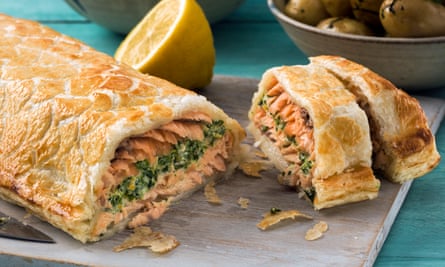
My preferred alternative for Christmas Day is always fish. But if you really want a showstopper, then make a salmon en croûte. You can do it with half or a whole salmon, shop-bought puff pastry and a sauce made with sparkling wine, butter, cream and tarragon.
Farokh Talati, St John Bread and Wine, London
I’m an avid fan of game. Over the years I’ve delighted the family with quails, pigeons, guinea fowls and partridge. Some of the butchers I speak to do a wonderful game pie mix. This is all the good bits of the birds that they put together for you to concoct into a lidded delight, allowing you to try all these delicious birds at a reasonable price. My go-to would be my Parsi-style spiced game pie, marinating the meat in homemade dhansak masala overnight, then gently braising it with shallots, garlic, a touch of ginger and a crush of tomato, some apple cider vinegar, Worcestershire sauce and chicken stock. After it’s cooked I top it with a suet pastry lid, eggwash it and scatter over a pinch of cumin, caraway and fennel seeds before baking in the oven at 180C/gas 4 for around an hour to an hour and a half.
Natalie Coleman, The Oyster Shed, London
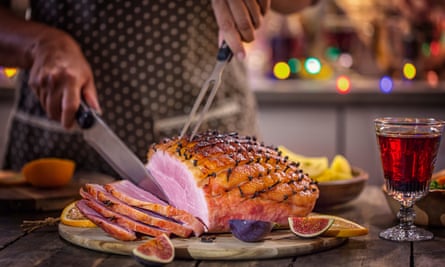
Everyone in my household goes mad for the ham I cook at Christmas – not only that, but it makes the best ham, egg and chips brunch on Boxing Day. Boil the ham with onions, carrots, celery, leek and a medley of herbs and spices to create a nice stock, which can be used to cook the traditional Christmas vegetable accompaniments. I would then let the meat rest, stud with cloves, smother in a mixture of honey, dijon mustard and a little bit of rapeseed oil and roast in the oven (for a 2.5kg ham, boil for two hours, then roast at 180C/gas 4 for 45 minutes, basting every 15 minutes) until the marinade has completely absorbed into the joint and the ham turns a delicious golden brown colour. I’d serve this piping hot with the typical Christmas trimmings.
Steve Smith, Latymer, Surrey
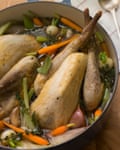
I can’t say I’ve ever understood the fascination with turkey for Christmas dinner, or any other dinner, for that matter. I’d much rather eat a pot-roasted guinea fowl baked in hay. It’s a wonderful bird to use at Christmas: great flavour, moist, and pot roasting allows you to collect all the wonderful juices for a simple gravy. They are much easier to cook and better value for money than turkey. You should easily feed four from a good-sized bird and not have to suffer the misfortune of eating it in a sandwich the following day. Place the guinea fowl in a deep casserole with fresh herbs and a couple of handfuls of hay. Put a lid on and roast it at 175C/gas 4 for approximately 1.5 hours, basting from time to time. Remove the pan from the oven, and replace the herbs with more fresh herbs. Quickly replace the lid and leave it to rest for 15 minutes, letting the herbs infuse the bird again. Put the casserole directly on to the table without lifting the lid. Only open it when about to serve – when the air will be perfumed with its aromas.
Matt Sullivan, Young’s pubs, London
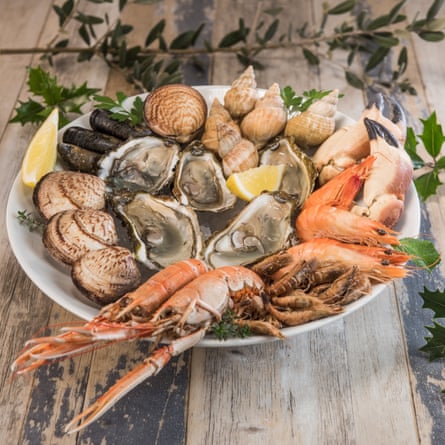
A show-stopping platter showcasing the best of British seasonal seafood is far better than turkey for me – all cooked in the morning, dressed and cleaned, ready to be served cold to my guests later. The French would call it fruits de mer – I call it steamed south coast clams and Cornish mussels, dressed Devon crab, boiled native lobster, served up with three-cornered leek, garlic butter, oysters from Mersea Island with tabasco and pickled shallots, langoustines from the Scottish Hebrides poached off and served with a lemon mayonnaise. All of this sounds daunting but is incredibly easy to put together in advance, and mostly involves just steaming or boiling, with a small amount of simple preparation.
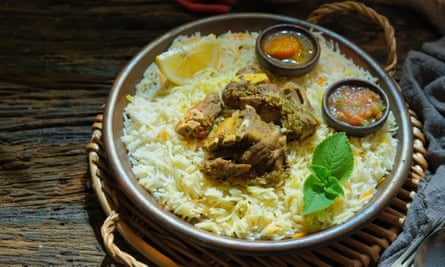
While in the UK lamb is associated with Easter, it’s a good option for Christmas, too. It is quite traditional to have it in Syria, and there are many different ways to cook it. Lamb is a strong meat, full of flavour and super-comforting during the winter, and perfect with strong seasoning. I get my lamb halal, and usually choose a fillet, as you can just use the meat fat to cook it – you don’t need any oil. A slow-roasted lamb is also a great option – in Syria we would serve it with raisins, rice and nuts at Christmas.
Giovann Attard, Norma, London
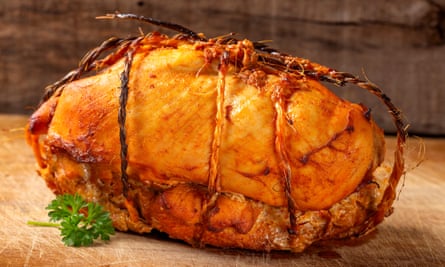
I would go for a large whole chicken. Debone it and open it flat (skin side down) on aluminium foil. It’s not too difficult; you can probably find a YouTube video on how to do it. Then I would make a pork mince stuffing with sage, garlic and breadcrumbs, and layer that on top of the chicken. Place three or four boiled eggs on top (cooked for five minutes, so that they are nice and soft on the inside). Then wrap the chicken into a roll, just like a jam roly-poly. Make sure the foil is wrapped around it, and close it at both ends. Roast the stuffed chicken roll at 180C/gas 4 in some chicken stock for about 45 minutes, and leave it to rest. Before serving, remove the foil and place in the oven for a further 15 minutes at 200C/gas 6 to get a nice crispy chicken skin. Once ready, slice and serve with loads of gravy and all the trimmings.



